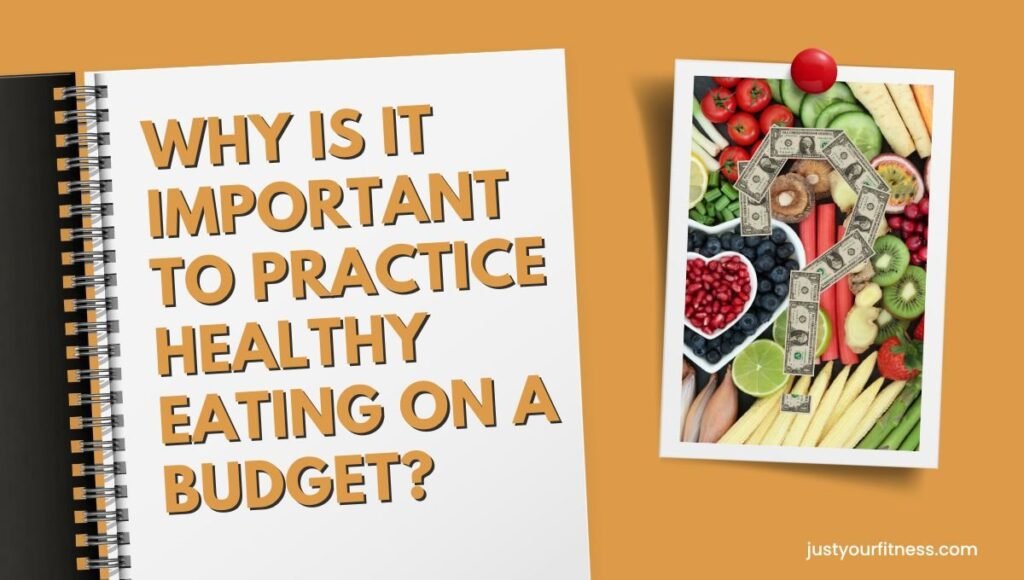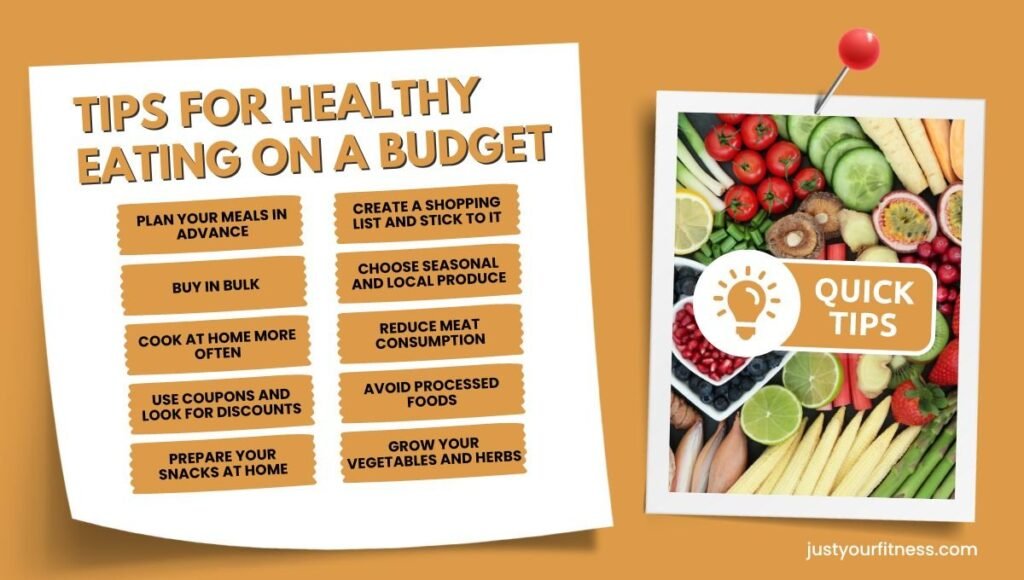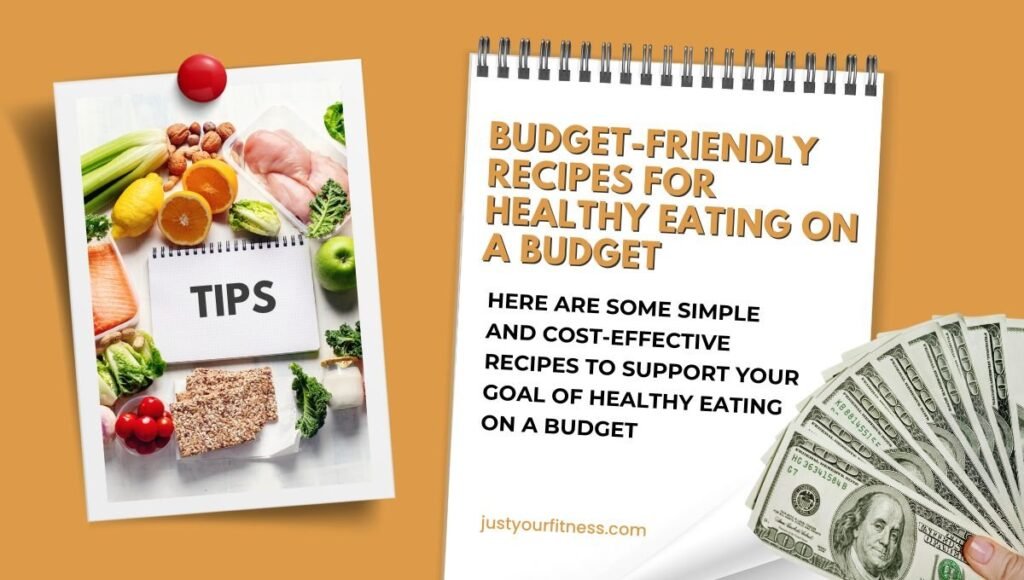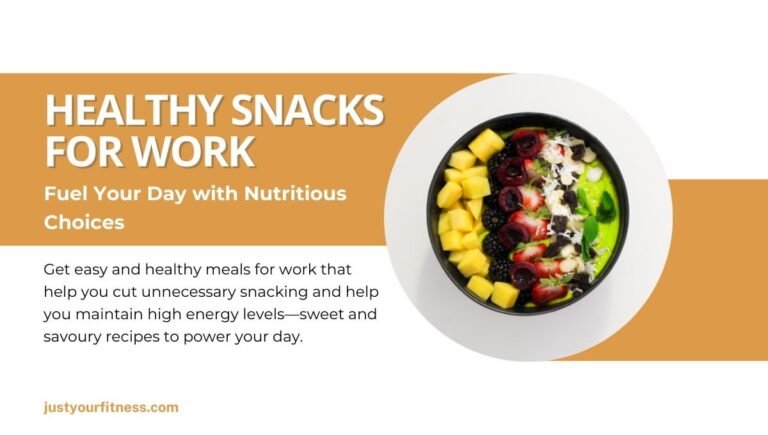Healthy Eating on a Budget: Focus on Meals Without Overspending

Introduction
Healthy foods don’t necessarily have to cost a lot of money. Many people do not realize you can eat healthy and still be conscious of your wallet. Healthy eating on a budget is also possible, depending on your choices while preparing them. Here, we will tell more about how to maintain a healthy diet with little money, give examples of cost-friendly meals, and give some more hints on how to save when shopping for food.
Why Is It Important to Practice Healthy Eating on a Budget?

Many people think that healthy eating is expensive, but the fact is that healthy eating on a budget is possible. Opting for healthy foods instead of processed and junk foods helps one stay healthy without paying the premium price. Lucky for you, this article will outline healthy eating on a budget and the positive impact that it can have on your life without having you dip too deep into your wallet.
Tips for Healthy Eating on a budget

1. Plan Your Meals in Advance
Planning your meals is one of the most effective strategies for saving money while eating healthy. Please also consider taking your time and planning what you eat in the coming week before going shopping. This will help you avoid spending unnecessarily and help you stay on track with your budget. Add cheap but healthy foods such as whole grains, vegetables and lean meat to your diet plan.
2. Create a Shopping List and Stick to It
Impulse buying is a significant difficulty for people who want healthy eating on a budget. To avoid this, the meal planner should create a shopping list and only purchase the items provided on the list. This will reduce spending and help prevent the intake of unhealthy foods.
3. Buy in Bulk
Purchasing a large quantity is an excellent way to maintain proper nutrition when on a tight budget. Cereals, beans, nuts, and seeds are some of the foods that are more affordable to be bought in bulk. Another advantage of bulk buying is that it lowers the amount spent on packaging, making it possible to save even more.
4. Choose Seasonal and Local Produce
Local and fresh produce are also cheaper than the fruits and vegetables found during other seasons. Choosing foods that are in season and sourced locally is much more cost-effective. It helps you spend less money and provides fresher and tastier foods for your everyday meals.
5. Cook at Home More Often
Take-out meals are costly and unhealthy. Preparing meals at home also helps one keep an eye on what is being prepared and used and helps one to healthy eating on a budget. Cook in easy recipes you can easily buy and try to cook more to carry the meal forward to the next day.
6. Reduce Meat Consumption
Protein sources, especially meats, are believed to be the most costly food items in a meal. Cutting down your portion size of meat and including more plant sources of protein like beans, lentils, and tofu can help you eat healthy on a budget. More importantly, plant-based products are relatively cheaper and rich in nutrient value.
7. Use coupons and look for discounts for healthy eating on a budget
Most groceries are on weekly sales and have coupons, which should be considered if you want to shop at a cheaper price. Make sure to utilize these offers for healthy eating on a budget. Pay attention to special offers on healthy items, such as fresh fruits, whole grains, and lean protein sources.
8. Avoid Processed Foods
Compared to natural foods, ready-made products are usually costlier and rich in additives and chemicals. When preparing affordable meals, the best foods to target are vegetables, fruits, whole grains, and lean meat. These items are healthier and more filling, enabling you to eat less and save money.
9. Prepare Your Snacks at Home
Canned snacks are often expensive and are loaded with processed and unhealthy content. To save money, buy snacks with less fat, sugar, and sodium, or make them home, like homemade granola bars, roasted chickpeas, and fresh fruits. Not only are these snacks more affordable, but they are also more beneficial for the body.
10. Grow Your Vegetables and Herbs
One idea is to try and grow your vegetables and herbs if you have enough space for a garden. It’s an excellent method that keeps the cost of foods low while promoting a healthy meal-making process. Of course, even a small garden or growing plants in pots on the windowsill allows fresh and cheap herbs and vegetables.
Budget-Friendly Recipes for Healthy Eating on a Budget

Here are some simple and cost-effective recipes to support your goal of healthy eating on a budget
1. Evergreen Vegetable Stir fry with Brown Rice
This is a straightforward recipe for a fast, colourful, and cheap meal, ideal for a healthy diet. You can use any vegetables, such as broccoli, carrots, and bell peppers, and stir-fry them with garlic and ginger. Enjoy this dish on top of a portion of brown rice, making it a complete meal.
2. Lentil Soup
Lentils are highly cheap and possibly one of the most affordable protein sources. Comforting and healthy, lentil soup is easy to make with onions, carrots, celery, and tomatoes for a cheap meal. It is a nutritious meal that is also tasty and can be prepared in portions you want to use in a week.
3. Oatmeal with Fresh Fruits
Oatmeal belongs to those types of food that are generally recommended for Weight Watchers or for people who are restricted with money spent on food. It is cheap, simple to prepare, and very useful in cooking. The best thing about it is that you can finish it with fruits, nuts, or even seeds, making it a perfect breakfast or snack.
Smart Shopping Tips for Healthy Eating

So here are some smart shopping tips that should help in the fight to stick to a healthy but cheap diet:
1. Compare Prices Across Stores
When you find a unique product in one store, you find a similar product cheaper in another. If you want to eat healthily and cheaply, spend some of your time comparing the prices of healthy foods in different stores and then buy from the best store.
2. Avoid Shopping When Hungry
Hunger also causes one to spend a lot of money buying unhealthy products when shopping. Have a light meal or a snack before going to the store to ensure it is easier to concentrate on low-cost healthy foods.
3. Understand Food Labels
It would be best if you learned to read food labels so that you can avoid buying unhealthy foods but at the same time look for cheap foods. Try to include vitamins and minerals in your diet and prevent processing foods that contain extra sugars, salts, and unhealthy fats. This strategy is essential when it comes to healthy eating, mainly when one is focusing on the budget.
Conclusion
Anyone who cares can stick to a healthy diet if they know how to plan and choose wisely. Planning your meals and cooking, attempting to buy fresh produce and fruits, and even growing your vegetables are all ways to help with healthier eating while not spending large amounts of money. Think of eating nutritious meals for less money as an investment in the future, with less focus on money and more on quality and choice.
FAQs
1. What is the best way of managing your diet with limited money?
Ans. To save money, prepare meals ahead of time, purchase large quantities, cook food at home, and choose foods that are fresh and available in a specific season.
2. What are some excellent and inexpensive dishes for healthy eating on a budget?
Ans. The best options for cheap and healthy meals include vegetable sauté with brown rice, lentil soup, oatmeal, fruit breakfast, and beef stew with vegetables.
3. Can people eat balanced and nutritious meals while buying cheap foods?
Ans: Healthy food does not have to mean spending much money. One can save money by eating nutritious meals, cooking, and avoiding ready-made products.







One Comment